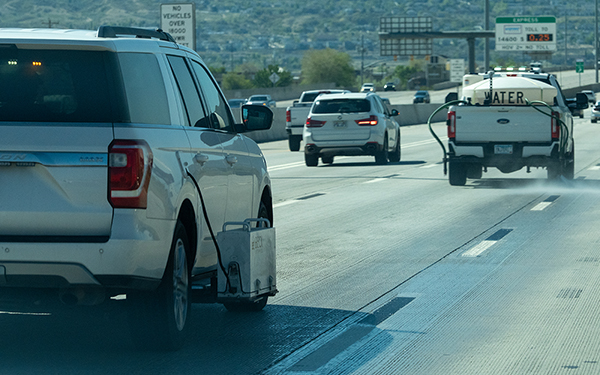
The Utah Department of Transportation (UDOT) is testing mobile retroreflective technology along five designated testing zones on southbound I-15 between South Salt Lake and Draper.
The technology allows UDOT to measure lane marking visibility using moving vehicles instead of crews standing on the highway. It also gives the agency assess in all weather conditions.
“Any time we can do our jobs safely, and get the data we need without anyone getting hurt and impacting the public, it’s a big win,” Abdul Wakil, UDOT maintenance asset engineer, said. “Not only are we helping to keep routes safe and efficient in the present, but we’re also looking for innovative ways to improve their travel experience in the future — while keeping our crews safe.”
The technology works by using wet-reflective tape that collects data. Microprisms added to the tape enable retroreflectivity. Retroreflective materials bounce light back instead of scattering it.
Previously, UDOT crews were required to pace over lane markings holding a retroreflectometer as it scanned lane markings with lasers and collected data. The method is slow and put crew members at risk of being struck.
Mobile retroreflectometer units follow behind another vehicle that splashes water onto the lane striping. The units assess the visibility of lane markings when wet.